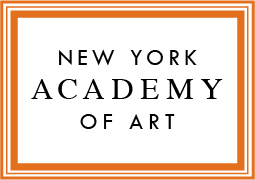I know that I speak for everyone on the Moscow residency when I say that our time here has been, and continues to be, spectacular. Apart from the every day luxuries of our imperial style Stalin-era skyscraper apartment and access to a beautiful and historically significant painting studio, one of my favorite things about Russia has been visiting the museums. We have visited nine museums: The Tretyakov Museum, The Tretyakov’s Modern Art Museum, the Master and Margarita Museum, The Moscow Museum of Modern art (MMOMA), The Baron Steiglitz Academy and Museum, The Academy of Art’s Museum, The Hermitage, the Russian Museum, and the Pushkin Museum. The Tretyakov Museum has become a very familiar place to us during our Monday copying days. The museum is closed to the public on that day and we are allowed six hours to paint, draw, and wander around the museum. They have a great collection of Repins, and also some remarkable Vasily Vereschagins, one of which James is copying.
The Tretyakov Museum has become a very familiar place to us during our Monday copying days. The museum is closed to the public on that day and we are allowed six hours to paint, draw, and wander around the museum. They have a great collection of Repins, and also some remarkable Vasily Vereschagins, one of which James is copying.
Fortunately, our translator Sonia arranged for us to have a private (English) tour of the Tretyakov’s Modern Art Museum, where we learned about artists like Goncharova, Pavel Filonov, Alexander Yakovlev, and of course, Kandinsky.
The Master and Margarita Museum was a special treat for me, because last semester (coincidentally before I knew I was going to Moscow,) I read Mikhail Bulgakov’s masterpiece, The Master and Margarita; a book that caused a lot of controversy at the time of it’s release in 1940, but is now completely embraced and championed by the people of Moscow. The museum is located in the actual apartment where the main characters in the book lived. Outside of the museum, our translator lets me know when we pass other locations referred to in the book, and I am very excited to see them.
We visited the Moscow Museum of Modern art as part of the biennale tour. The biennale lead us to several galleries and finally the MMOMA to see works of contemporary art by young artists. Most of the work was either instillations (video and other) or photography. Unfortunately very few paintings were included in the shows (if I remember correctly there were two small, non-representational paintings).In St. Petersburg, we met a student who attends The Baron Steiglitz Academy. He brought us into the school and showed us around. The Baron Steiglitz Academy and Museum is one of the most extraordinary places I have ever had the privilege of touring. The site of this famous academy is one of the former homes of Baron Steiglitz, a nineteenth century philanthropist. Any description I can give will fail to do the building justice (think NYAA meets Versailles.) Students are surrounded by so much visual language provided by the building itself that in some rooms, large movable walls cover up the ornate wooden carvings, or other decorative features adorning the walls. We all agreed that The New York Academy of Art should begin a relationship with The Baron Steiglitz Academy.
The Academy of Arts Museum had a few rooms of thesis paintings by their more noteworthy alumni, as well as several rooms displaying architectural prototypes used to plan the design and construction of famous buildings in St. Petersburg. Nikita, the same student who showed us around the Baron Steiglitz Academy, convinced the Academy of Arts Museum to allow us access to their school building, which was “closed for the summer, but also the fire.” The building was massive and abandoned. We were never given the details explaining the circumstance of the fire, but it was very obvious that this school had somewhat recently suffered a devastating fire, and was now scarred from it.
Then, of course, there was the Hermitage. The Hermitage is home to one of the greatest collections of art in the world. We spent two full days in the Hermitage and saw works by Rembrandt, Degas, Cezanne, Bonnard, Brueghel, Rubens, Titian, Pontormo, El Greco, Velazquez, Gentileschi, Goya, Ribera, Gerome, Bouguereau, Michelangelo, and many others. I am eternally grateful to the New York Academy of Art for giving me the opportunity to visit this museum.
We visited the Russian Museum on our last day in St. Petersburg and saw a remarkable collection including works by Filonov, Kramskoy, and, of course, Repin. The Russian Museum has an unrivaled collection of Repin paintings, including Zaporozhye Cossack’s Writing a Mocking Letter to the Turkish Sultan, one of the best paintings I have ever seen.
Amanda Pulham (MFA 2014) is joined by Gabriel Zea (MFA 2015), Sarah Issakharian (MFA 2015), and James Raczkowski (MFA 2015) in Moscow. These four students are spending their summer taking in the sights and creating work on an Academy-sponsored Artist in Residence Program. Throughout the summer, their adventures will be documented on the Academy’s blog. Stay tuned for more.

